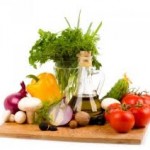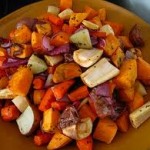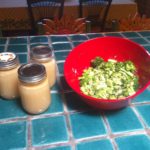What is a Ketogenic Diet and Why Should You be Interested?
Is this way of eating/living sustainable?
Essentially the keto diet works by “tricking” the body into thinking it is fasting, through a strict elimination of glucose that is found in carbohydrate foods. Today the ketogenic diet goes by several different names, including the “no-carb diet” or “very low carbohydrate ketogenic diet”(LCKD or VLCKD for short).
Following a ketogenic diet puts your body into a state of “ketosis,” which is a metabolic state that occurs when most of the body’s energy comes from ketone bodies in the blood, rather than from glucose. This is in contrast to a glycolytic state, where blood glucose (sugar) provides most of the body’s fuel (or energy).
When you’re following a ketogenic diet, your body is burning fat for energy rather than carbohydrates, so in the process most people lose excess body fat rapidly, even when consuming lots of fat and adequate calories through their diet.
The traditional ketogenic diet created for those with epilepsy consisted of getting about 75 percent of calories from sources of fat (such as oils or fattier cuts of meat), 5 percent from carbohydrates and 20 percent from protein. Unlike the Atkin’s low-carb diet, protein intake is limited. We will discuss a less strict version below.
Because this way of eating is low in carbs it work through the elimination of glucose. Our bodies normally run on glucose (or sugar) for energy. We cannot make glucose and only have about 24 hours’ worth stored in our muscle tissue and liver. Once glucose is no longer available from food sources, we begin to burn stored fat instead, or fat from our diets. The ketogenic diet, therefore, eliminates glucose and causes the body to burn its own fat quickly.
The ketogenic diet works by eliminating carbohydrates from the diet and keeping the body’s carbohydrate stores almost empty, therefore preventing too much insulin from being released following food consumption. This can help reverse ”insulin resistance,” which is the underlying problem contributing to diabetes. If on BP meds, it fall too low, helping one to stop using the medication.
What is involved in a Ketogenic Diet?
- Get enough healthy fats in your diet, Eat mostly: coconut or coconut oil, avocado, chia seeds or flaxseeds, non-starchy vegetables, sprouted nuts, organic grass-fed meat and raw dairy products. Aim for a ratio that is about 40 percent fat, 30 percent protein, and 30 percent carb. The exact ratio of these macronutrients will differ depending on your specific goals and current state of health.
- It is highly recommend to consume a large amount of MCFA’s (Medium Chain Fatty Acids) from sources like unrefined coconut oil since this is probably the easiest type of fat for your body to metabolize properly and burn as fuel. In addition to MCFA’s, consume a moderate amount of saturated fat from sources like grass fed/free range meats or raw dairy products. Finally, other sources of fat, like polyunsaturated or monounsaturated fats, should come from healthy, whole foods like nuts, seeds and wild-caught fish, olive oil, ghee, avocados and krill oil.
- If you find it difficult to stick to a very low-carb diet every day, especially for months on end, you might want to consider carb-cycling instead. Carb cycling increases carbohydrate intake (and sometimes calories in general) only at the right timeand in the right amounts, usually about 1–2 times per week.
- Carbs are not the enemy — they actually have many important roles in the body! Eating enough carbohydrates at the right time can help “reset your metabolic thermostat” and signal your body to create enough beneficial hormones (like leptin — a protein that’s made in the fat cells, circulates in the bloodstream, and goes to the brain.)
It helps body maintain normal weight. These not only keep you at a healthy weight, but keep you feeling energized and mentally remaining satisfied with your diet overall. Eating a very low-carb diet nonstop can lead some to feel overly restricted, tired and demotivated — but for many adding in a small amount of carbs at certain times makes it easier to follow a healthy way of eating long-term that won’t cause weight regain or strong carb (sugar) cravings.
- Finally, consuming at least moderate carbohydrates also enables you to eat enough whole plant foods and to get enough fiber. Carbs are the primary type of macronutrient found in most plant foods, although exactly how many carbs a plant food has depends on the specific type. Some of the healthiest foods in the world — such as leafy green veggies, cruciferous veggies, artichokes, asparagus, sea veggies, herbs and spices, for example — are actually pretty low in carbohydrates and, therefore, suitable on the ketogenic diet. Whole foods that are higher in carbs — such as sweet potatoes and other root veggies, beans/legumes, and fruit — are often limited. A bonus of eating these foods is that they contain plenty of dietary fiber and antioxidants, helping with things like digestion, heart health and more.
Low-carb veggies
- Broccoli
2. Cauliflower
3. Mushrooms
4. Peppers
5. Chard or collard greens
8. Spinach and Swiss chard
9. Green beans
10. Arugula
11. Leeks and onions
12. Tomatoes and eggplant
13. Brussels sprouts kale and Avocado
15. Turnips
16. Cabbage
17. Carrots (moderate carbs)
Eggs & dairy
18. Cage-free eggs-local or Organic Valley are good
19. Full-fat unsweetened yogurt or kefir
- Raw whole milk
21. Hard cheese, sour cream and heavy cream (all are low in carbs, but very importantly I recommend grass-fed and organic dairy whenever possible, ideally made from raw milk). Cheeses low in carbs include blue cheese, cheddar cheese, goat, feta, Swiss, parmesan and asiago cheese.
Other Foods
- Mao, mustard, pesto, stevia, lakanto
- Fermented foods, pickles, kimchi, saurkraute, olives, edamame
- Whey protein,
- Dry wine (no sweet wines)
26.Small amounts of grapefruit, apple, orange, peach, berries
Chili Cheese Muffins
Ingredients
- 1¼ cups blanched almond flour
- ½ teaspoon sea salt
- ½ teaspoon baking soda
- 3 large eggs
- 2 tablespoons red pepper flakes
- 2 cups firmly packed grated cheddar cheese (8 oz.)
- Instructions
- In a food processor, combine almond flour, salt, and baking soda (or hand mix)
- Pulse in eggs, until well combined
- Briefly pulse in 1 tablespoon red pepper flakes, and cheddar cheese (and any spices you like…be creative!)
- Scoop a heaping ¼ cup of batter into each paper lined muffin cup
- Garnish muffins with remaining 1 tablespoon pepper flakes (optional)
- Bake at 350° for 25-30 minutes
- Cool 1 hour
- Serve
Dinner Ideas
Combine veggies of choice, (from low carb list) with grass fed protein, eggs etc. Add a salad if you want, voila, an easy, tasty meal any time!
Prepare a large salad and garnish with olives, olive oil, a few nuts, (a pesto dressing would be delicious) Add some salmon or protein of choice.
Remember FAT is a good thing. Good FAT that is!
Facts First
- Fasting and other dietary regimens have been used to treat epilepsy since at least 500 BC. To mimic the metabolism of fasting, the ketogenic diet(KD) was introduced by modern physicians as a treatment for epilepsy in the 1920s. Current studies are being done using the ketogenic diet with Alzheimers, Parkinson’s Disease, ALS, MS, Cancer and nerve disorders such as neuropathy. The results have been very promising.
- The National Institute of Health study shows the beneficial effects of a long–term ketogenic dietto significantly reduce body weight and body mass index of the patients. Furthermore, it decreased the level of triglycerides, LDL cholesterol and blood glucose, and increased the level of HDL cholesterol. Sounds good so far right?
- Ketogenic diets also showed an increase in the concentrations of heart healthy HDL cholesterol more than low-fat, high-carb diets. Low-carb, high fat diets decrease LDLparticle concentration (LDL-P) and increase the size of LDL cholesterol, the big fluffy guys that are the good Ketogenic diets alsodecrease the amount of harmful VLDL cholesterol in the blood.
- Let’s look at Diabetes…One study found that the ketogenic diet improved insulin sensitivity by a whopping 75%! Another study in patients with type 2 diabetes found that 7 of the 21 participants were able to stop all diabetes medications. In yet another study, the ketogenic group lost 24.4 lbs compared to 15.2 lbs in the higher-carb group. Additionally, 2%of the ketogenic group was also able to stop or reduce diabetes medication, compared to 62% in the higher-carb group. Sounding better all the time!
Ok, you get the point, a Ketogenic diet can have huge health benefits for certain groups of people. But is it right for everyone? Before I answer that question let’s dispel some myths….
Fiction and Myths
- You must eat every couple hours – not true! When we look at our ancestral past, man often went long periods of time without access to food. We are genetically wired to do the same thing!
- Fat is bad for you – myth! We were brainwashed in the 1980’s with the “low-fat” mantra that has now created a nation of Diabetics. Eating “healthy” fats nourishes your body at a very deep level and so doing, satisfies us for long lengths of time.
- A Keto diet is all meat – Fiction! The true Keto diet is “moderate” protein and high in healthy fats. The proteins should be coming from “clean” meat sources for the healthiest program and best results.
- A Keto diet will be hard – Not true! Yes, the first 5-6 days of withdrawals from sugar may be challenging but after that you will find it very satisfying.
Vegetables
- Leafy greens like arugula, spinach, kale, collard greens, Swiss chard
- Celery
- Cucumber
- Cabbage
- Green beans
- Broccoli
- Black olives
- Leeks
- Tomatoes
- Zucchini
Meat, Fish, Poultry
- Red meat
- Chicken
- Pork
- Veal
- Lamb
- Liver and organ meats
- Fowl
- Shrimp
- Crawfish
- Crab
- Lobster
- Scallops
- Salmon
Fats and Dressings
- Grass-fed butter
- Olive oil
- Avocado oil
- Coconut oil
- Low carb dressings
Other
- Herbs and spices
- Balsamic vinegar
- Red wine vinegar
- Mustard
- Hot sauces (check the label for carbs)
- Pickles
- Monk fruit sweeteners a natural, low-carb option
Cheese
- Gruyere
- Neufchatel
- Cheddar
- Fontina
- Havarti
- Swiss
- Parmesan
- Gouda
- Mozzarella
Dairy and Alternatives
- Half-and-half
- Heavy cream
- Eggs
- Unsweetened almond milk
Drinks
- Water
- Sparkling water
- Unsweetened tea
- Herbal tea
- Coffee
The Keto Diet Avoids These Foods
- Grains
- Sugars
- Artificial sweeteners
- Processed foods
- High-carb root vegetables


















